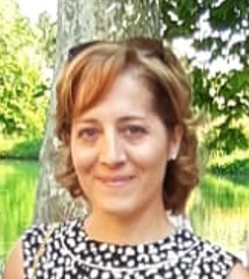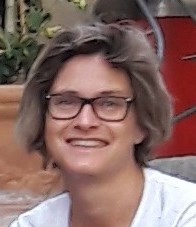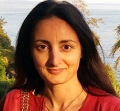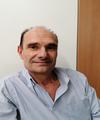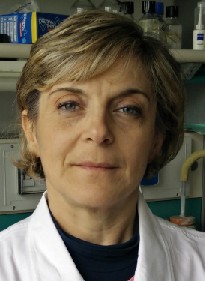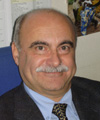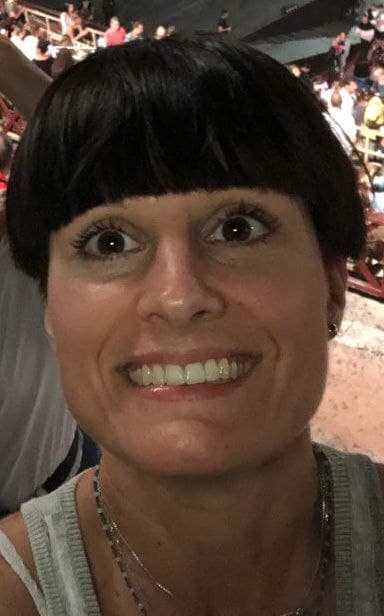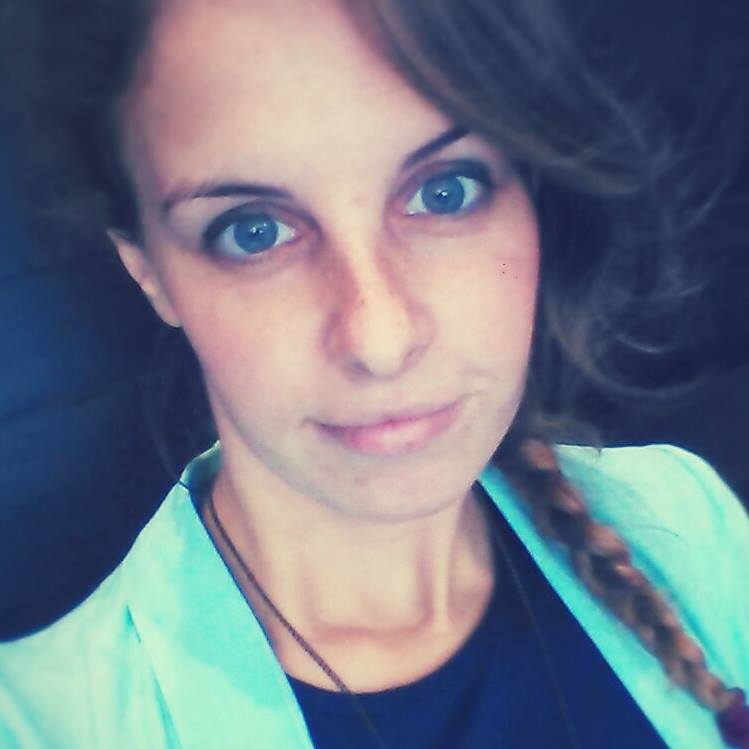Studying at the University of Verona
Here you can find information on the organisational aspects of the Programme, lecture timetables, learning activities and useful contact details for your time at the University, from enrolment to graduation.
Academic calendar
The academic calendar shows the deadlines and scheduled events that are relevant to students, teaching and technical-administrative staff of the University. Public holidays and University closures are also indicated. The academic year normally begins on 1 October each year and ends on 30 September of the following year.
Course calendar
The Academic Calendar sets out the degree programme lecture and exam timetables, as well as the relevant university closure dates..
| Period | From | To |
|---|---|---|
| FISIO ROV 2A1S | Oct 7, 2019 | Dec 20, 2019 |
| FISIO ROV 3A1S | Oct 7, 2019 | Nov 20, 2019 |
| FISIO ROV 1A1S | Oct 9, 2019 | Dec 13, 2019 |
| FISIO ROV 2A2S | Feb 10, 2020 | Apr 8, 2020 |
| FISIO ROV 1A2S | Mar 5, 2020 | Jun 5, 2020 |
| FISIO ROV 3A2S | Mar 23, 2020 | May 8, 2020 |
| Session | From | To |
|---|---|---|
| FISIO ROV SESSIONE INVERNALE 1 ANNO | Jan 7, 2020 | Jan 31, 2020 |
| FISIO ROV SESSIONE INVERNALE 3 ANNO | Jan 13, 2020 | Jan 24, 2020 |
| FISIO ROV SESSIONE INVERNALE 2 ANNO | Jan 13, 2020 | Feb 7, 2020 |
| FISIO ROV SESSIONE ESTIVA 3 ANNO (1 appello) | Mar 9, 2020 | Mar 20, 2020 |
| FISIO ROV SESSIONE ESTIVA 1 ANNO | Jun 24, 2020 | Jul 28, 2020 |
| FISIO ROV SESSIONE ESTIVA 3 ANNO (2 appello) | Jun 25, 2020 | Jul 29, 2020 |
| FISIO ROV SESSIONE ESTIVA 2 ANNO | Jul 13, 2020 | Jul 31, 2020 |
| FISIO ROV SESSIONE AUTUNNALE | Sep 1, 2020 | Sep 30, 2020 |
| Session | From | To |
|---|---|---|
| FISIO SESSIONE AUTUNNALE | Nov 1, 2020 | Dec 22, 2020 |
| FISIO SESSIONE PRIMAVERILE | Mar 1, 2021 | Apr 30, 2021 |
| Period | From | To |
|---|---|---|
| FESTIVITA' OGNISSANTI | Nov 1, 2019 | Nov 1, 2019 |
| FESTIVITA' IMMACOLATA CONCEZIONE | Dec 8, 2019 | Dec 8, 2019 |
| Vacanze di Natale | Dec 24, 2019 | Jan 6, 2020 |
| VACANZE DI PASQUA | Apr 10, 2020 | Apr 15, 2020 |
| FESTA DELLA LIBERAZIONE | Apr 25, 2020 | Apr 25, 2020 |
| Festa del Lavoro | May 1, 2020 | May 1, 2020 |
| FESTA DELLA REPUBBLICA | Jun 2, 2020 | Jun 2, 2020 |
| FESTA S. PATRONO | Aug 5, 2020 | Aug 5, 2020 |
| Description | Period | From | To |
|---|---|---|---|
| FISIO ROV 3^ ANNO - 1^ SEMESTRE (1 periodo) | FISIO ROV 3^ ANNO - 1^ SEMESTRE (1 periodo) | Nov 21, 2019 | Dec 20, 2019 |
| FISIO ROV 3^ ANNO - 1^ SEMESTRE (2 periodo) | FISIO ROV 3^ ANNO - 1^ SEMESTRE (2 periodo) | Jan 27, 2020 | Feb 28, 2020 |
| FISIO ROV 1^ ANNO - 1^ SEMESTRE | FISIO ROV 1^ ANNO - 1^ SEMESTRE | Feb 3, 2020 | Mar 4, 2020 |
| FISIO ROV 2^ ANNO - 1^ SEMESTRE | FISIO ROV 2^ ANNO - 1^ SEMESTRE | Apr 20, 2020 | May 22, 2020 |
| FISIO ROV 3^ ANNO - 2^ SEMESTRE (1 periodo) | FISIO ROV 3^ ANNO - 2^ SEMESTRE (1 periodo) | May 11, 2020 | Jun 17, 2020 |
| FISIO ROV 2^ ANNO - 2^ SEMESTRE | FISIO ROV 2^ ANNO - 2^ SEMESTRE | Jun 3, 2020 | Jul 10, 2020 |
| FISIO ROV 3^ ANNO - 2^ SEMESTRE (2 periodo) | FISIO ROV 3^ ANNO - 2^ SEMESTRE (2 periodo) | Sep 1, 2020 | Sep 29, 2020 |
| FISIO ROV 1^ ANNO - 2^ SEMESTRE | FISIO ROV 1^ ANNO - 2^ SEMESTRE | Sep 1, 2020 | Sep 29, 2020 |
Exam calendar
Exam dates and rounds are managed by the relevant Medicine Teaching and Student Services Unit.
To view all the exam sessions available, please use the Exam dashboard on ESSE3.
If you forgot your login details or have problems logging in, please contact the relevant IT HelpDesk, or check the login details recovery web page.
Should you have any doubts or questions, please check the Enrollment FAQs
Academic staff
 elena.bravi@apss.tn.it
elena.bravi@apss.tn.it
 manuela.cappuccini@apss.tn.it
manuela.cappuccini@apss.tn.it
 0461 515402
0461 515402
 quagliadiego@gmail.com
quagliadiego@gmail.com
 0461904654
0461904654
 roberta.zanoni@univr.it
roberta.zanoni@univr.it
Study Plan
The Study Plan includes all modules, teaching and learning activities that each student will need to undertake during their time at the University.
Please select your Study Plan based on your enrollment year.
1° Year
| Modules | Credits | TAF | SSD |
|---|
2° Year activated in the A.Y. 2020/2021
| Modules | Credits | TAF | SSD |
|---|
3° Year activated in the A.Y. 2021/2022
| Modules | Credits | TAF | SSD |
|---|
| Modules | Credits | TAF | SSD |
|---|
| Modules | Credits | TAF | SSD |
|---|
| Modules | Credits | TAF | SSD |
|---|
Legend | Type of training activity (TTA)
TAF (Type of Educational Activity) All courses and activities are classified into different types of educational activities, indicated by a letter.
Clinical practice (2nd year) (2020/2021)
Teaching code
4S01546
Teacher
Coordinator
Credits
20
Language
Italian
Scientific Disciplinary Sector (SSD)
MED/48 - NURSING IN NEUROPSYCHIATRY AND REHABILITATION
Period
FISIO ROV 2^ ANNO - 1^ SEMESTRE, FISIO ROV 2^ ANNO - 2^ SEMESTRE
Learning outcomes
PREREQUISITES Attendance at the Professional Laboratory, Exercises, Simulations and Tutorial Sessions in preparation for the experience. METHODOLOGY Support to an expert health-care professional (Internship Guide /Internship Supervisor) in specific health contexts with a ratio of 1/1 or 1/2, completion of teaching Tasks. SETTING Experiences in musculoskeletal, orthopedic and neurological fields. AREAS OF COMPETENCE At the end of the internship activities the Student acquires skills in the following areas. In the field of Professional Responsibility, he/she demonstrates the ability to apply knowledge and understanding as he acts according to the principles of ethics and professional ethics. Demonstrate attention and respect for different ideas, opinions and cultures and make no judgments. Respect confidentiality in the processing of the data of the assisted person. The Student demonstrates autonomy of judgment as he acts within the limits of his own competence and experience. The student demonstrates a collaborative and purposeful attitude recognizing the limits of his/her role. The student identifies new and complex situations for which it has no competence cooperating with colleagues before acting with the GT. As part of Management and Organization (Management), the student demonstrates ability to apply knowledge and understanding as he/she identifies the elements of the organization in which he/she operates. The student recognizes the roles of the various team members. He/she takes care of his/her own person and uniform and keeps the working environment in order. He/she works to deadlines and respects the assigned mandates and communicates his/her absences. In relation to the objectives to be achieved and in respect of the context in which he/she works, the student organizes his/her own training day with the GT supervision. In the area of training/self-training, he/she demonstrates learning skills as he/she identifies his/her own individual learning needs and shares them with the GT. He/she is able to self-assess himself/herself to identify the level of knowledge and skills acquired. The student acts autonomously keeping himself/herself informed. Search for learning opportunities consistent with the objectives of the internship. The student cooperates with the GT and, in relation to the feedback he/she receives, he/she is able to adapt his/her behaviour. As part of the Effectiveness Based Practice (EBP), the student demonstrates ability to apply knowledge and understanding as, starting from a specific clinical problem emerged in the internship, he/she is able to formulate a structured question and answer it. The student then researches and selects evidence through the consultation of appropriate databases and autonomy of judgment in using evidence for the assessment of the assisted person and to plan a physiotherapy treatment. In the area of Communication and Relationship, the student has communication skills in that he/she communicates in a professional manner with the patient or the caregivers/colleagues, using empathetic attitudes and active listening. The student uses a specific terminology in relation to the interlocutor, modulating the rhythm (turn-taking) and the timing of communication and he/she manages coherently verbal and non-verbal levels of communication. The student is able to facilitate the involvement of the assisted person in the Care and Rehabilitation activities by providing all necessary information clearly and comprehensively and verifying their understanding. The student communicates with the GT using scientific terminology when describing what is observed, answers a question or shares a topic with a multi-professional team. The student demonstrates relational and collaborative skills with GT and other professional figures in respect of roles. The Student charts his/her physiotherapy portfolio by completing the required course tasks. In the field of Care and Rehabilitation, the student has the ability to apply knowledge, understanding and autonomy of judgment as he/she collects and selects private data of the person assisted through the available documentation and using, with the supervision of the GT, interviews with the person assisted or caregiver. The student has the ability to apply knowledge and understanding in describing, after careful observation, the postural attitude and the patient’s activity limitations. He7She demonstrates independent judgment in choosing, basing his/her decision on the data collected and the initial hypotheses formulated, on validated instruments and measurements, according to the "biopsychosocial" model. After having ascertained the absence of contraindications and risks, he/she carries out, with GT supervision, the safe physiotherapy assessment using the chosen instruments. The Student analyzes the data collected, identifying the structural and functional impairments, limitations of the activities, restrictions on participation, relevant environmental and personal factors, and puts them in relation to each other. He /she elaborates and explains the GT the clinical-functional reasoning and identifies the most likely diagnostic hypotheses. The student identifies physiotherapy problems by placing them in priority order of intervention. The Student defines the general and specific therapeutic objectives of the assisted person in a specific, measurable, acceptable, realistic way, defined over time (SMART). He/she plans the physiotherapy treatment in relation to the objectives to be achieved and motivates the GT to show the reasons of his/her choices. The Student, with supervision of the GT, carries out the rehabilitation intervention: he prepares the setting autonomously, considers the necessary tools, positions the assisted person safeguarding their well-being and safety, respects privacy, hygiene principles and organizes activities in relation to the availability of time. He/she uses correctly gripping techniques for joint mobilization, respecting the principles of ergonomics and safety. He/she describes to the GT and then implements, with supervision, simple proposals for therapeutic exercises for the assisted person consistent with the identified objectives. The student applies, with the GT supervision, physical therapies and basic manual therapy techniques. The student identifies any orthoses and aids and educate patients on how to use them. The student checks the effectiveness of the physiotherapy intervention by comparing the data of the initial assessments with the final ones. In the field of Therapeutic Education, the Student shows judgment autonomy as she/he identifies the educational needs of the assisted person and of the caregivers, formulates educational interventions consistent with the needs identified and implements them, with GT supervision, using the modality suitable for the capacity of understanding / execution of the assisted person and the caregiver. As part of Prevention, he/she has the ability to apply knowledge and understanding as he/she is attentive to the condition of the assisted person and identifies, if they occur, signs of alteration of neurovegetative functions. The student is able to detect, if necessary, significant vital parameters. During the care and rehabilitation activities he/she is able to guarantee safety and comfort to the assisted person. He/she has independent judgment in recognizing situations at risk of transmitting infections and consequently implements the right procedures. He/she selects and implements, in accordance with the principles of ergonomics and personal safety and the assisted person, the basic techniques for positioning, moving and transferring in relation to the person being assisted using, if necessary, the most suitable aids. The student knows simple primary prevention programs in the field of musculoskeletal problems.
Program
2ND YEAR
PREREQUISITES
Attendance at the Professional Laboratory, Exercises and Simulations, and Tutorial Sessions in
preparation for the experience.
METHODOLOGY
Working alongside an experienced professional (Internship Guide / Internship Supervisor) in
specific health care settings with a 1/1 or 1/2 ratio, completion of Teaching Assignments.
SETTING
Experience in musculoskeletal, orthopedic and neurological settings.
AREAS OF EXPERTISE
Upon completion of the internship activities, the Student will acquire competencies in the following areas.
In the area of Professional Responsibility the student demonstrates the ability to apply knowledge and
understanding as they act according to the principles of ethics and professional ethics.
The student demonstrates care and respect for different ideas, opinions, and cultures and does not make judgments.
Respects confidentiality in the handling of the data of the person being assisted.
The student demonstrates autonomy of judgment by acting within the limits of their competence and experience.
experience.
Demonstrates a collaborative and proactive attitude by recognizing the limits of the student's role.
Identifies new and complex situations for which he/she does not have expertise by confronting before
acting with GT.
In the area of Management and Organization (Management) demonstrates the ability to apply
knowledge and understanding by identifying the elements of the organization in which they work.
operates. Recognizes the roles of different team members.
Takes care of self and uniform and maintains a tidy working environment.
Respects schedules, activity times and assigned tasks and communicates absences.
In relation to the objectives to be achieved and in respect of the context where it is inserted organizes, with
supervision of the GT, organizes their own day of training.
In the context of Training/Self-Training, demonstrates the ability to learn by
Identifies his/her own individual learning needs and shares them with the GT.
Is able to self-assess to identify the level of knowledge and skills acquired. Activates
independently in seeking out knowledge where there are gaps.
Researches learning opportunities consistent with internship goals.
Seeks comparison with the GT and, in relation to the feedback received, is able to modify his/her own
behavior.
In the area of Evidence-Based Practice (EBP) demonstrates ability to apply
knowledge and understanding in that, starting from a specific clinical problem that emerges in training, is able to
the trainee is able to formulate a structured question in such a way that he/she can easily answer it.
answer it.
Research and select the available evidence through consultation of databases
appropriate and independent judgment in using the evidence for the assessment of the person assisted and for the planning of treatment.
and for the planning of physical therapy treatment.
In the area of Communication and Relationship has communication skills in that he/she communicates in a
professional way with the person assisted or the caregiver of reference putting in place
empathic and active listening attitudes.
They use appropriate terminology in relation to the interlocutor, modulating the rhythm (words and speech) and timing of communication and managing the communication.
modulates the pace (words and speech) and timing of communication and consistently manages the verbal and non-verbal levels of communication.
communication.
Is able to facilitate the involvement of the person assisted in the activities of Care and
Rehabilitation activities by providing all necessary information in a clear and comprehensive manner and verifying
understanding.
Communicates with GT using scientific terminology when describing what they observe
Translated with www.DeepL.com/Translator (free version)
Examination Methods
During each internship experience, the clinical tutor and supervisor accompany the student providing feedback and interview moments with the aim of informing him/her about the level of achievement of the expected skills.
At the end of each internship experience is completed and delivered to the student an evaluation form which summarizes the levels of competence achieved.
At the end of each year of the course, a collegial certification evaluation, expressed in thirtieths, is conducted, attesting to the levels achieved by the student in the development of expected professional skills.
This evaluation is the result of information and student data derived from the summary of the internship evaluation forms, the quality of the written papers, and the level of performance demonstrated during the internship examination.
The internship examination is given at the end of each year of the course and uses written application and practical simulation tests.
Translated with www.DeepL.com/Translator (free version)
Career prospects
Module/Programme news
News for students
There you will find information, resources and services useful during your time at the University (Student’s exam record, your study plan on ESSE3, Distance Learning courses, university email account, office forms, administrative procedures, etc.). You can log into MyUnivr with your GIA login details: only in this way will you be able to receive notification of all the notices from your teachers and your secretariat via email and soon also via the Univr app.
Graduation
Documents
| Title | Info File |
|---|---|
|
|
pdf, it, 367 KB, 19/02/24 |
|
|
pdf, it, 142 KB, 19/01/24 |
|
|
pdf, it, 862 KB, 19/01/24 |
|
|
pdf, it, 273 KB, 25/03/24 |
Gestione carriere
Orario lezioni
Documents
| Title | Info File |
|---|---|
|
|
pdf, it, 525 KB, 22/09/23 |
|
|
pdf, it, 39 KB, 17/04/24 |
|
|
pdf, it, 33 KB, 17/04/24 |
|
|
pdf, it, 1453 KB, 07/02/24 |
Student login and resources
Attività Seminariali/a scelta dello studente
Attività Seminariali/a scelta dello studente



